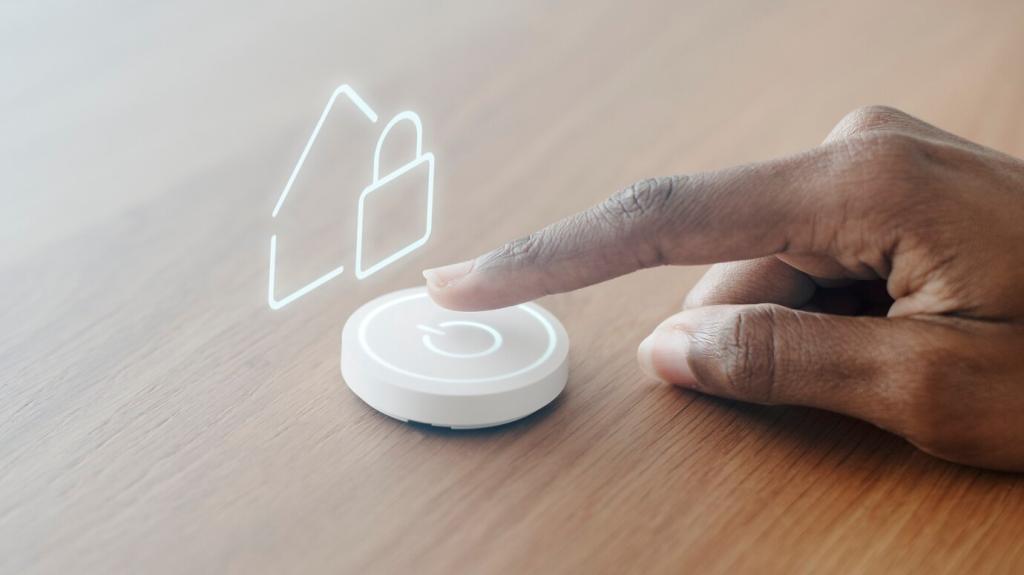Latest Innovations in Smart Home Technology
The world of smart home technology is evolving quickly, introducing groundbreaking solutions to enhance convenience, efficiency, and sustainability in modern living spaces. From intelligent assistants that streamline daily routines to eco-friendly systems that reduce energy consumption, today’s smart homes seamlessly blend functionality with futuristic design. This page explores the most significant innovations redefining how we live, interact, and maintain our homes, providing insight into both the current landscape and the near future of home automation.
Smart Home Assistants and Integrated Ecosystems

Modern smart home assistants leverage advanced voice recognition and natural language processing to understand complex commands and provide tailored responses. With improvements in AI, these systems can now interpret context, distinguish between users, and execute multi-step requests. As a result, interaction with home technology feels more conversational and intuitive, eliminating the friction that once accompanied digital interfaces. Ongoing advancements are making it possible for assistants to anticipate needs, automate routines without explicit prompts, and support multiple languages, bringing seamless communication to homes worldwide.
Advanced Security Solutions
The latest surveillance cameras utilize artificial intelligence to distinguish between routine activity and suspicious behavior. Features like facial recognition, object detection, and real-time alerts empower homeowners to monitor their property proactively. These systems minimize false alarms by learning regular patterns and only flagging anomalies. Convenience is further enhanced via cloud connectivity, remote access, and seamless integration with other smart home devices, allowing users to respond instantly to incidents from anywhere in the world.
Revolutionary smart locks and entry systems are redefining home access. These devices go beyond keyless entry by offering biometric authentication, temporary digital keys, and activity logs for greater control over who enters the home. Advanced encryption and automated locking mechanisms provide a robust security layer while ensuring that convenience is never sacrificed for safety. Users can grant, revoke, or monitor access remotely, making guest management and deliveries more secure than ever.
New intrusion detection solutions employ a network of interconnected sensors and machine learning to identify break-ins or environmental hazards before they escalate. These systems can differentiate between an open window and an actual intrusion, triggering preemptive actions such as activating lights, contacting authorities, or locking doors automatically. By combining real-time analytics with immediate response capabilities, smart homes are now equipped to both detect and deter security threats, reshaping residential safety standards.
Intelligent Climate and Energy Management
Learning Thermostats and Environmental Sensors
Learning thermostats represent a leap forward from programmable models by leveraging historical data, occupancy patterns, and weather forecasts to dynamically adjust home heating and cooling systems. Environmental sensors monitor humidity, air quality, and even sunlight, communicating with thermostats to create the ideal indoor climate. This integration ensures energy is used only when needed, and offers homeowners cost savings without compromising on comfort. The ongoing refinement of self-learning algorithms is expanding customization capabilities for every living environment.
Smart Lighting Control and Automation
Recent advancements in smart lighting technology allow for seamless adaptation to daily routines and personal preferences. Systems can mimic natural light cycles, respond to occupancy, and adjust brightness or color temperature automatically. Integration with voice assistants enables instant, touch-free control, while scheduling features optimize energy usage by ensuring lights are off when not needed. Smart lighting solutions are also increasingly supporting health and wellness by incorporating circadian rhythm-based lighting patterns throughout the home.
Grid Interaction and Distributed Energy Solutions
Smart homes are now interacting directly with local energy grids, solar panels, and battery systems, taking a proactive role in managing consumption and production. Grid-interactive systems automatically shift power usage to off-peak hours or draw from stored renewable energy during peak demand. These distributed energy solutions enhance resilience to power outages and reduce reliance on traditional utilities. As more homes adopt such technology, communities can move closer to achieving sustainability goals while maintaining consistent comfort and convenience.
Next-Generation Entertainment and Media Integration
New audio and video systems enable seamless playback across multiple rooms, ensuring a consistent and immersive experience no matter where you are in the home. Advanced synchronization technology prevents lag or mismatched content, making house-wide parties or coordinated movie nights effortless. Smart speakers and displays can be added or reconfigured through intuitive interfaces, and content can follow occupants as they move, adapting instantly to each user’s profile and preferences.
Health, Wellness, and Ambient Monitoring
State-of-the-art air quality sensors continuously monitor for pollutants, allergens, and VOCs (volatile organic compounds), enabling homeowners to respond to changing indoor conditions. These devices can trigger air purifiers, humidifiers, or ventilation systems automatically when thresholds are exceeded. By integrating data from outdoor sources, smart systems can also recommend keeping windows closed during high-pollution times, safeguard vulnerable residents, and even offer long-term trend analysis to optimize air quality management strategies.

Previous slide
Next slide
Sustainable and Eco-Friendly Smart Solutions
Water Conservation and Smart Irrigation
Smart irrigation controllers and leak detectors are now central to home sustainability solutions. These devices use weather data, soil sensors, and usage analytics to optimize watering schedules and runtimes, preventing overwatering and reducing waste. Immediate leak detection and remote shutoff capabilities help prevent costly damage and water loss. By continually monitoring and adjusting usage, these systems support water conservation without compromising landscape health or convenience for users.
Energy Consumption Analytics and Optimization
Cutting-edge energy monitors offer real-time analytics on household usage, identifying inefficiencies and suggesting targeted improvements. Connected appliances can operate during off-peak hours or in tandem with renewable energy generation to further drive down emissions and costs. Apps and dashboards provide deep insights, empowering users to make informed choices. These analytics help households understand, predict, and reduce their energy use—critical for both environmental and financial sustainability.
Waste Reduction and Recycling Technology
Smart waste sorting and recycling technologies are being incorporated into modern kitchens and home service areas. These systems use AI-powered recognition to sort recyclables from general waste, track disposal habits, and offer personalized feedback. Automated composters process organic waste efficiently, providing fertilizer for gardens or landscaping. By promoting responsible waste management and closing the loop on household consumption, today’s smart homes make sustainability second nature.
